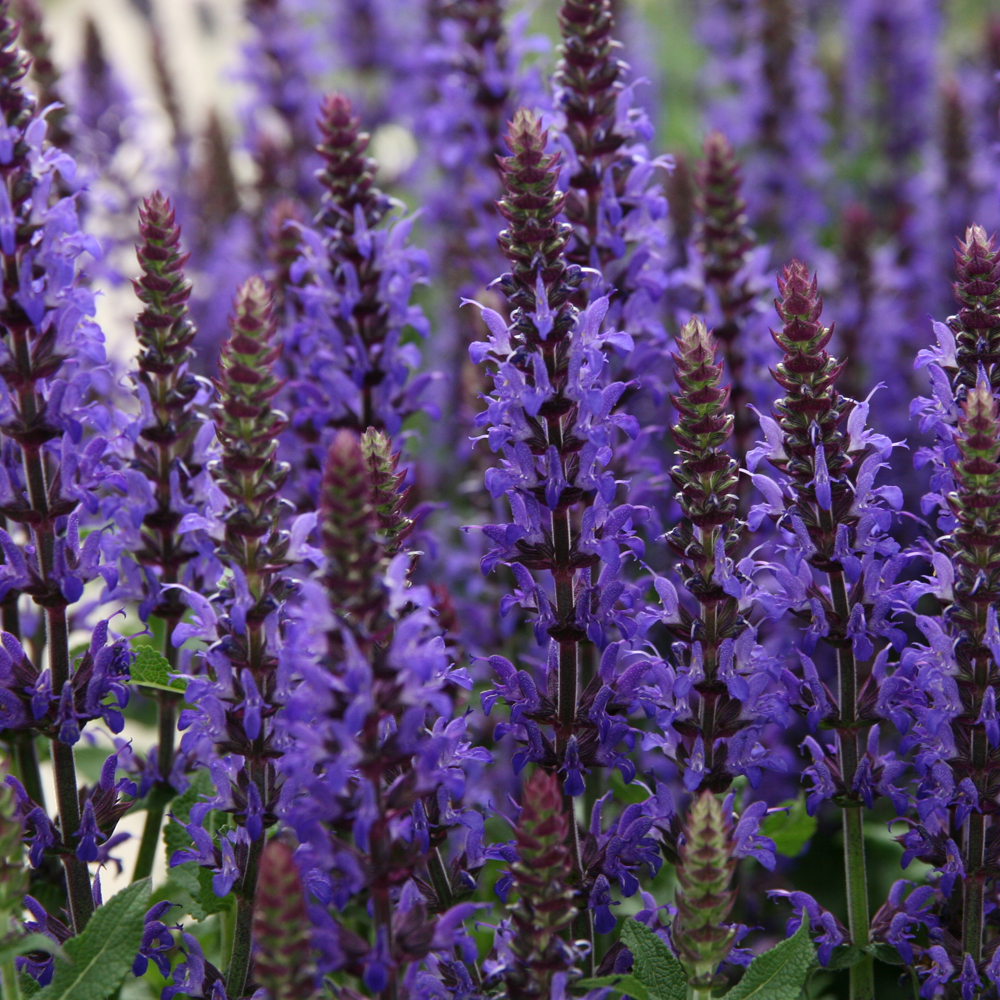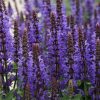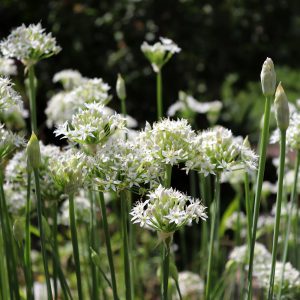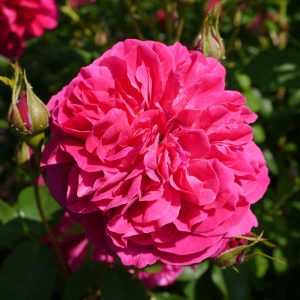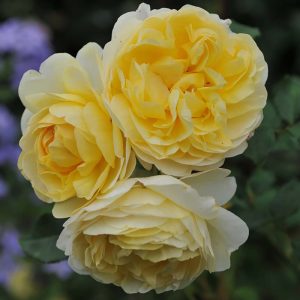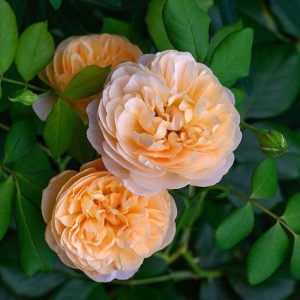Description
Salvia nemorosa ‘Blue Marvel’ is a compact and easy-to-grow perennial that produces beautiful violet-blue flower spikes in early summer, which can last for several weeks. The plant has a bushy habit and grows up to 45cm in height, making it perfect for planting in the front of borders or in containers. Its attractive dark green foliage also adds interest to the garden, even when the plant is not in flower. ‘Blue Marvel’ is a great addition to a cottage garden or mixed border, and it pairs well with other perennials such as echinacea, phlox, and geraniums. It prefers full sun to partial shade and well-draining soil, and is generally low maintenance once established.
Key Facts
- Common Name(s):Salvia nemorosa ‘Blue Marvel’
- Hardiness:Fully hardy
- How big will I get? Salvia nemorosa ‘Blue Marvel’ can grow to a height of 0.3m and a spread of 0.3m.
- Did You Know That:The name salvia comes from the Latin world “salvus” meaning well or unharmed?
Plant Calendar
A rough guide to how this plant will change through the year.
| Jan | Feb | Mar | Apr | May | June | July | Aug | Sept | Oct | Nov | Dec | |
| Flowering Time |  
|  
|  
|  
|  
| |||||||
| Foliage Colour |   |
  |
  |
  |
  |
  |
  |
  |
  |
| J | F | M | A | M | J | J | A | S | O | N | D |
 
|  
|  
|  
|  
| |||||||
  |
  |
  |
  |
  |
  |
  |
  |
  |
Care Guide

Soil Requirements
Salvia nemorosa ‘Blue Marvel’ prefers moist but well-draining soil. This plant can grow in soil with a wide range of pH levels, it is not picky about the pH level of the soil.

Best Position
Salvia nemorosa ‘Blue Marvel’ can handle either an exposed or a sheltered position and can cope with either full sun or partial shade.

Maintenance
Salvia nemorosa ‘Blue Marvel’ should be deadheaded regularly to promote new flowers coming through. This will prolong the flowering period of the plant as it saves the energy that the plant would have put into producing seeds and allows it to produce more flowers!

Pest, Diseases and Wildlife
Salvia nemorosa ‘Blue Marvel’ can have problems with slugs, snails and leafhoppers, and it tends not to have problems with diseases. It is also known to attract bees and other pollinators. It is not considered to be toxic.
